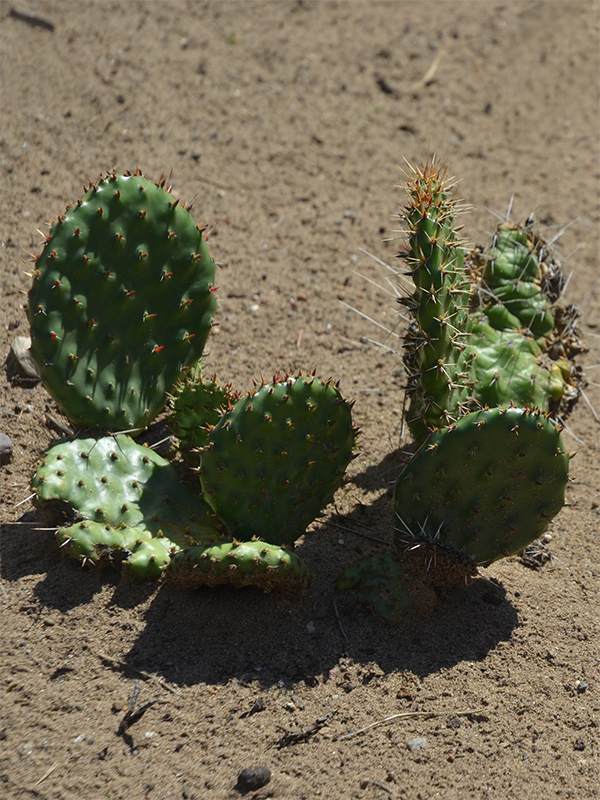| Shape | Clumping. |
| Landscape | Winter interest, among potted succulent collections, in rock gardens, as a potted patio plant or as a specimen. |
| Propagation | Division or rooting of pads or seed. |
| Cultivation | Best in very fast draining soils and full sun. |
| Pests | No known pests or diseases. |
| Notable Specimens | Desert Botanical Gardens, Phoenix, Arizona, United States of America.
The University of Alberta Botanic Garden, Devon, Alberta, Canada. |
| Habitat | Dry, well-drained sandy, gravelly, and rocky soils on upper bajadas and moderate slopes in the lower mountains. |
| Leaf Description | Glamorous or lightly-spined broad-ovate succulent leaves. |
| Flower Description | 5 -7 cm pink-magenta solitary flowers that bloom during the summer. |
| Fruit Description | Small ovate prickly pears that grow along the edges of the leaves. |
| Colour Description | Foliage can vary in colour from a silvery green to medium green tone. Prickly pears vary from a copper-brown to a reddish brown. |
| Texture Description | Smooth to spiny. |
